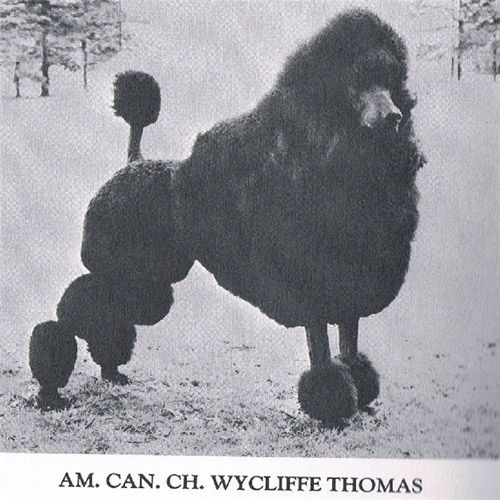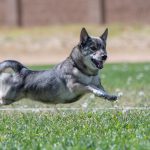
Why biodiversity?
Let’s tell a story of a breed. Any breed, as this story can apply to any of them.
Imagine you are a breeder in the 1950s. At that time (and still in some cases today) you are told that linebreeding is preferable to outcrossing. Why? First, if there is anything lurking in your lines, you’ll find it and can cull it (this is a time before genetic testing, of course, so you can’t test for recessive diseases like vWD – von Willebrand’s Disease). Secondly, you can quickly and easily set the type (the “look,” for non-dog people) that you like; it’s fast and it’s easy, and you can rapidly improve upon your line.
Imagine too, there is a kennel with winning dogs, great coats, winning temperaments. You like to win (who doesn’t like to win?) so of course their studs are appealing!
Let’s talk about that kennel. That kennel has a stud that started it all….in good ways, and in bad ways.
This winning kennel starts with a foundation of one stud and two related bitches. They take several offspring and outcross them, then cross back to offspring of siblings – concentrating the genes of that one fabulous stud. They breed uncle to niece, nephew to aunt, grandsire to granddaughter etc. And that’s fine for a while. This linebreeding continues for several decades. As one can imagine, over time this line becomes very homogeneous with very predictable type and temperament; the natural consequence of this is that most dogs in the line and kennel are genetically very similar, and thus very predictable. This is a powerful tool, because the dogs have all inherited the same winning look.
Why would this impact anyone but this kennel?
This kennel is so successful in the show world, these dogs appeal to competitive breeders around the world who recognize the look, and who also want to win. (Who doesn’t like to win?) So, other people in the breed with different lines of dogs (maybe dogs that are less predictable, less elegant, less showy) breed to studs exported around the world from this winning line. If lucky, they acquire bitches from them, and when they have puppies, they breed back to that same winning line. And because this line was already quite inbred, in two generations a kennel who wants that same look can have replaced 3/4 of their own line’s genetics with the genes of the winning kennel. They feel they’ve improved their lines and are happy. They win in the ring (who doesn’t like to win?). Very rapidly, however, the entire population becomes like that kennel. Homogeneous. Genetically and phenotypically.
This is where the danger comes. That original breeder may have uncovered some obvious recessive genetic diseases and using inbreeding she may have eliminated most. However, Imagine those original dogs had nearly all the genes that were needed to produce a complex disease – one that requires several different genes and perhaps a common environmental trigger. Through linebreeding and honing that line, they concentrated the genes for a stunning look, so every puppy had all the desirable genes that make a beautiful dog. But unbeknownst to any of the breeders, the same process concentrated those disease genes as well. At first the disease is unusual, doesn’t follow a traditional recessive pattern of inheritance. Breeders think it’s a fluke. Or due to an unfortunate outcross. But generations after the original linebreeding created that beautiful line, dogs around the world start turning up with the same specific diseases. And because everyone bred to descendants of that winning kennel, the older lines that did not carry the genes for that specific disease have been bred out of existence.
Now all dogs are very similar, and very closely related. The biodiversity of the breed is at risk.
What’s more, since inbreeding was so successful, breeders still do it, and rare recessive diseases as well can become more and more common, pop up in this line and then in the breed as a whole. A benign example: familial enamel hypoplasia, or stained teeth. This is actually helpful for researchers, because it’s easy to find recessive diseases in highly inbred dogs! But, why would we breeders want to get to the point of needing to find these mutations, rather than avoid them altogether? Since it’s possible to keep this from happening, isn’t it our responsibility to our dogs and our homes to keep our breeds healthy? Keeping inbreeding low in a closed genepool will naturally protect from the rise of recessive disorders.
What exactly is biodiversity, simply put – or the variation we are discussing here?
The best explanation I’ve yet read is from BetterBred Founder Natalie, and as a result we will share it again here!
Most breeders think of DNA as coming in two options- a good gene, or a mutant gene – like it is in many DNA tests. In fact, there are many genes or (in the case of the VGL canine diversity test) markers that come in a great many variations – like a t-shirt that is available in different colors. The more variants there are, the more information we have about population genetics. In more inbred breeds, there are fewer variants for each marker. So an inbred breed might have only a few colors available in t-shirts, whereas a diverse breed will have many colors of t-shirts. Apart from the relatively small number of genes that make up specific, predictable, visible breed traits, the rest of the gene pool is generally healthier when there’s lots of variation.
Unfortunately when breeders select too strictly for too long for very specific traits, there can be an unintended loss of variation in the parts of the DNA that are more beneficial when they have more variation. A good way to assess whether that good variation has been impacted is using markers like those used in the VGL canine diversity test. Because they are considered neutral – or not associated with any specific known trait – they are great for assessing genetic diversity. In breeds with ample diversity, there will be lots of variations for each marker (lots of colors in the t-shirt drawer.)
But what if you have a breed without much variation? Well, this happens, and can happen quite often. In this case the best thing breeders can do is try to make sure the variants that are in the breed are well distributed – so there are plenty of all of them in the breed. Imagine a t-shirt drawer with lots and lots of red t-shirts and only one blue one and one green one. If you lose one of the red ones, it doesn’t change much about the t-shirt drawer – there are lots of other red ones. But if you lose either the blue or green one, the variation is seriously diminished. If, on the other hand a third of the shirts are red, and a third are green and a third are blue, then it’s a lot harder to lose the existing variation in the drawer, even if you lose one once in a while and even though there are only 3 colors.
What about the status of my breed?
Some breeds can be highly inbred, or homologous, and have very few genetic variants and still be rather healthy. Why? Because those founding dogs – like our example above’s fabulous stud and two related bitches – were relatively healthy and did not carry many unknown mutations to cause disease (yet). Or perhaps the breed was managed carefully so there was as little inbreeding done as possible. In the case of few founders, it’s vital to preserve the breed’s biodiversity to prevent further depletion of the closed genepool and the rise of any lurking breed specific disease.
What if you have a breed that has lots of biodiversity? It depends on the status of the breed.
Some breeds have a lot of variation at the breedwide level, and this variation, or biodiversity, is well distributed. Back to the t-shirt analogy above, this means that not only are there many t-shirt colors, but there are roughly equal numbers of them. If one is lost, there are plenty others of that color to replace it. This is a wonderful place for a breed to be – it allows breeders some leeway when linebreeding and plenty of unrelated breeding mates for when an outcross is needed. All breeders must do in this event is preserve what they have and prevent a bottleneck from occurring.
Some breeds have a lot of variation at the breedwide level, but that variation is not well distributed; the bulk of the variation is found within a select few lines or individuals while the overwhelming majority of the breeding dogs in the population have genetics that are over-represented. This is evidence of a genetic bottleneck or popular sire syndrome. Again back to the t-shirt analogy, this would be a breed with many different colors, but most of the t-shirts are a single color, while the other colors are found in only one or two shirts. Losing some of those unusual shirts could mean they are gone forever. Breeds found in this state often have a number of breed specific diseases. This situation calls for breeders in that breed working in concert to increase the representation of unusual genetics (like buying more unusual colored t-shirts!) in order to redistribute the existing biodiversity within the breed. No one breeder can fix this alone. Cooperation, encouragement and a team mentality are required.
It’s our responsibility to preserve our breed and to prevent the rise of breed specific diseases, or diseases that all dogs in the population have the potential to produce.
So, how do we prevent the introgression (bringing in) of breed specific diseases, or reduce them once we have them? Remember how we discussed how the rise of breed specific diseases occurs – it’s by dogs becoming so closely related, due to the increasing influence of the same few ancestors, that all dogs contain the keys to produce that complex breed specific disease.
Preventing or mitigating it means making dogs less related, with different versions of genetics in their genomes. Some amount of relation within a breed is fine – until it is not. Back to Natalie’s description of t-shirt colors, we want to have roughly equal versions of red, blue and green shirts. We do not want our breeds to be like t-shirt drawers with almost all the red shirts, with a couple of very uncommon blue and green ones. We want all the colors well represented.
But, you may have heard or wonder – what if the singular blue or green shirts are representative of disease genes? Isn’t it good they are rare? Yes and no. This is why it’s important to use markers that are NOT selected for or against, or near DNA that may be selected for or against, like previously identified disease and trait genes. That way we know that the rare genes are not rare because they are being purposefully bred away from in mate selection. Nevertheless, we never want to breed for one particular marker or another – because it’s not wise to re-engineer the genome piece by piece. We simply don’t know enough about it. The way to select the “good” genes is to select carefully for overall health first, not just aesthetics or temperament. In this way, genes that are rare for good reason continue to become more rare, and “good” genes that are rare by coincidence are more likely not to be lost.
Mitigating the damage of a genetic bottleneck is complicated, but it can be done. If you have a lopsided breed, our management software will help redistribute the biodiversity, by moving towards better distribution of the variation in your breed. The better distributed it is, the more likely it will be preserved. Once that variation is lost, it’s gone forever.
BetterBred is devoted to the preservation of historic breeds, wise management of newly forming breeds, and the well being of all those in between – as well as their conscientious breeders. Our tools were developed after extensive review of the scientific, peer reviewed literature on the subject of breed and species management. What’s more, we regularly verify the accuracy of our conservation genetics results with the almost 3 million genetic relationships in our database, and tens of thousands of known relationships! Our software was created to give breeders the massive power of cutting edge breed management offered in ways that are easy to understand. You no longer have to be a scientist, or zoo keeper using complex software, to be a breed conservator.
Want to learn more about how to Enroll your breed in our breed management software? Visit here!
 Previous Post
Previous Post Next Post
Next Post


